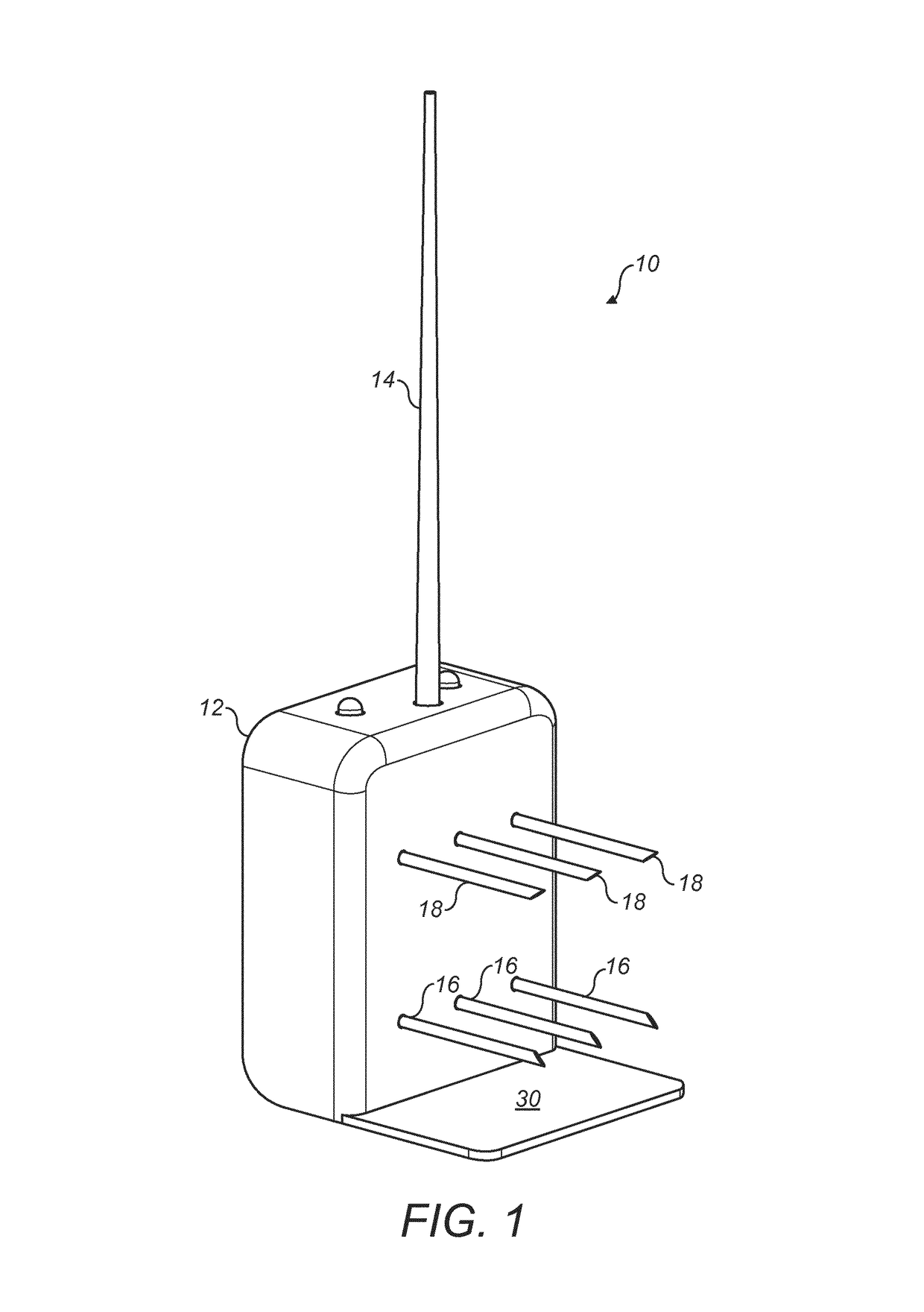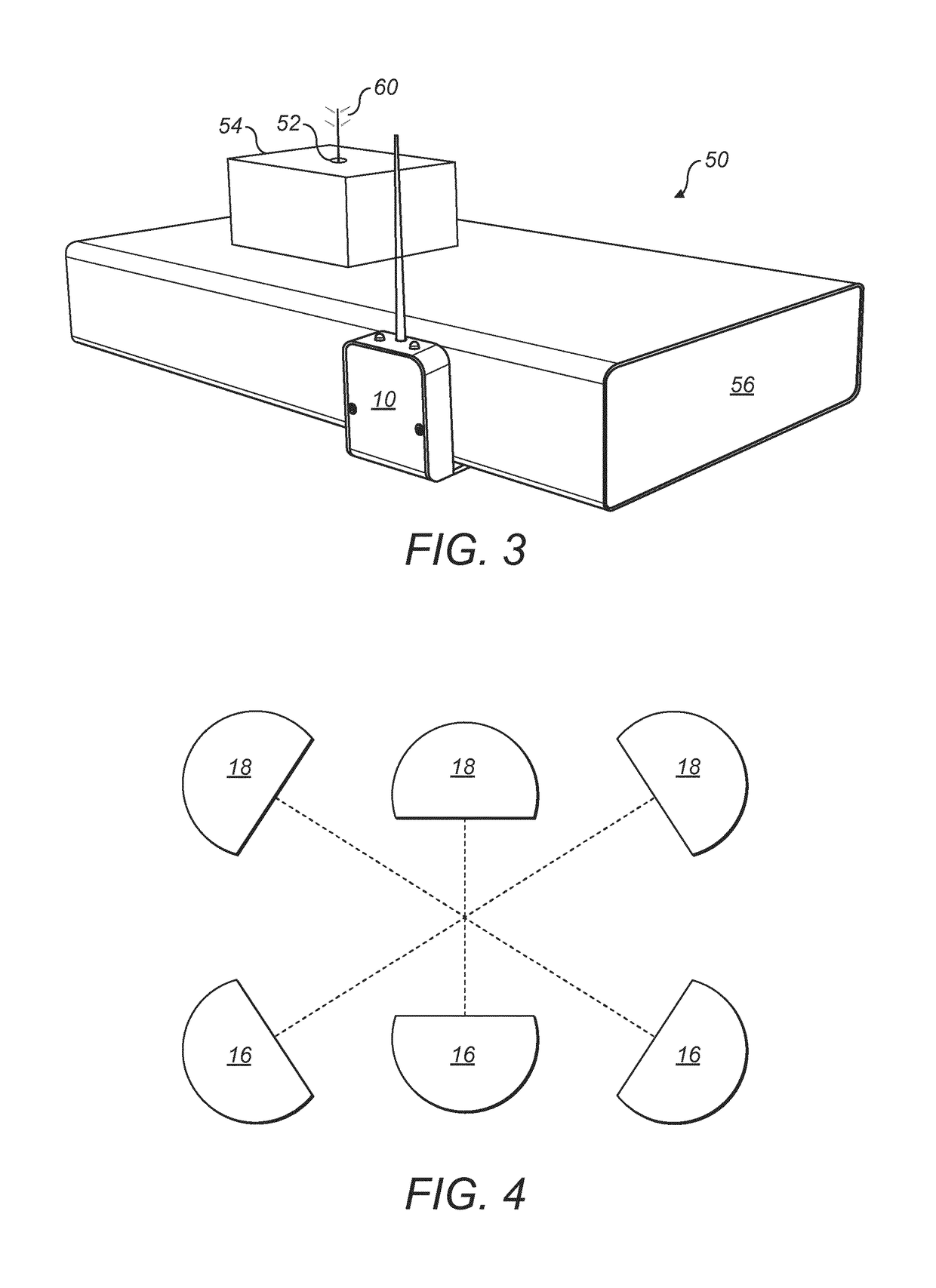Device and method for measuring plant growth conditions
a technology of growth conditions and devices, applied in watering devices, material impedances, instruments, etc., can solve the problems of limiting the information that can be obtained using such techniques, affecting the quality of plant growth, so as to achieve the effect of simplifying the manufacture of one par
- Summary
- Abstract
- Description
- Claims
- Application Information
AI Technical Summary
Benefits of technology
Problems solved by technology
Method used
Image
Examples
Embodiment Construction
[0058]Referring to FIG. 1, a preferred embodiment of a device 10 for detecting plant growth conditions is shown. The device 10 comprises a body 12, an antenna 14, a first array of probes 16 and a second array of probes 18. Each array of probes 16, 18 are fixed to the body 12 of the device, meaning that the distance between the arrays is itself fixed.
[0059]The device 10 may further comprise additional features not shown in FIG. 1, such as a visible indicator (for example, a light emitting device (LED)) to indicate whether the device 10 is switched on or a user interface to allow the user to control the device 10. In a simple example, the control of the device may be limited to an on / off switch.
[0060]In the preferred embodiment shown in FIG. 1, each array of probes 16, 18 consists of three individual probes. In preferred embodiments, two of these may act as electrodes, with a third acting as a temperature sensor. The electrodes can be used to probe electrical properties of the substra...
PUM
| Property | Measurement | Unit |
|---|---|---|
| radius | aaaaa | aaaaa |
| radius | aaaaa | aaaaa |
| frequency | aaaaa | aaaaa |
Abstract
Description
Claims
Application Information
 Login to View More
Login to View More - R&D
- Intellectual Property
- Life Sciences
- Materials
- Tech Scout
- Unparalleled Data Quality
- Higher Quality Content
- 60% Fewer Hallucinations
Browse by: Latest US Patents, China's latest patents, Technical Efficacy Thesaurus, Application Domain, Technology Topic, Popular Technical Reports.
© 2025 PatSnap. All rights reserved.Legal|Privacy policy|Modern Slavery Act Transparency Statement|Sitemap|About US| Contact US: help@patsnap.com



